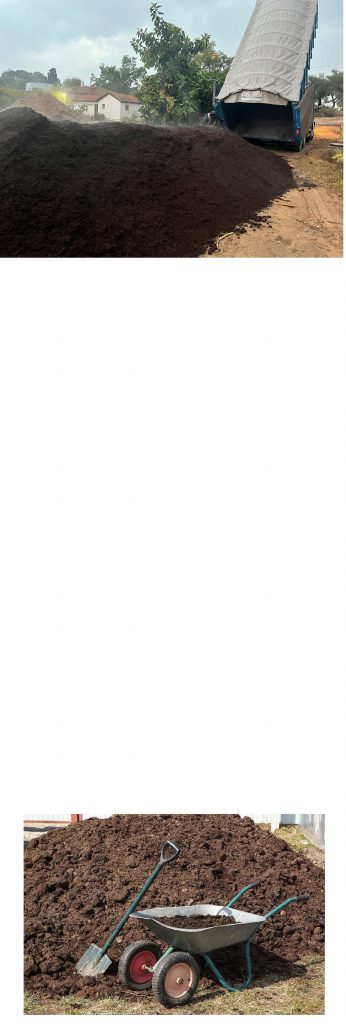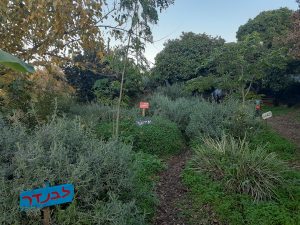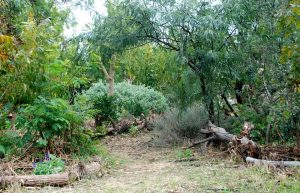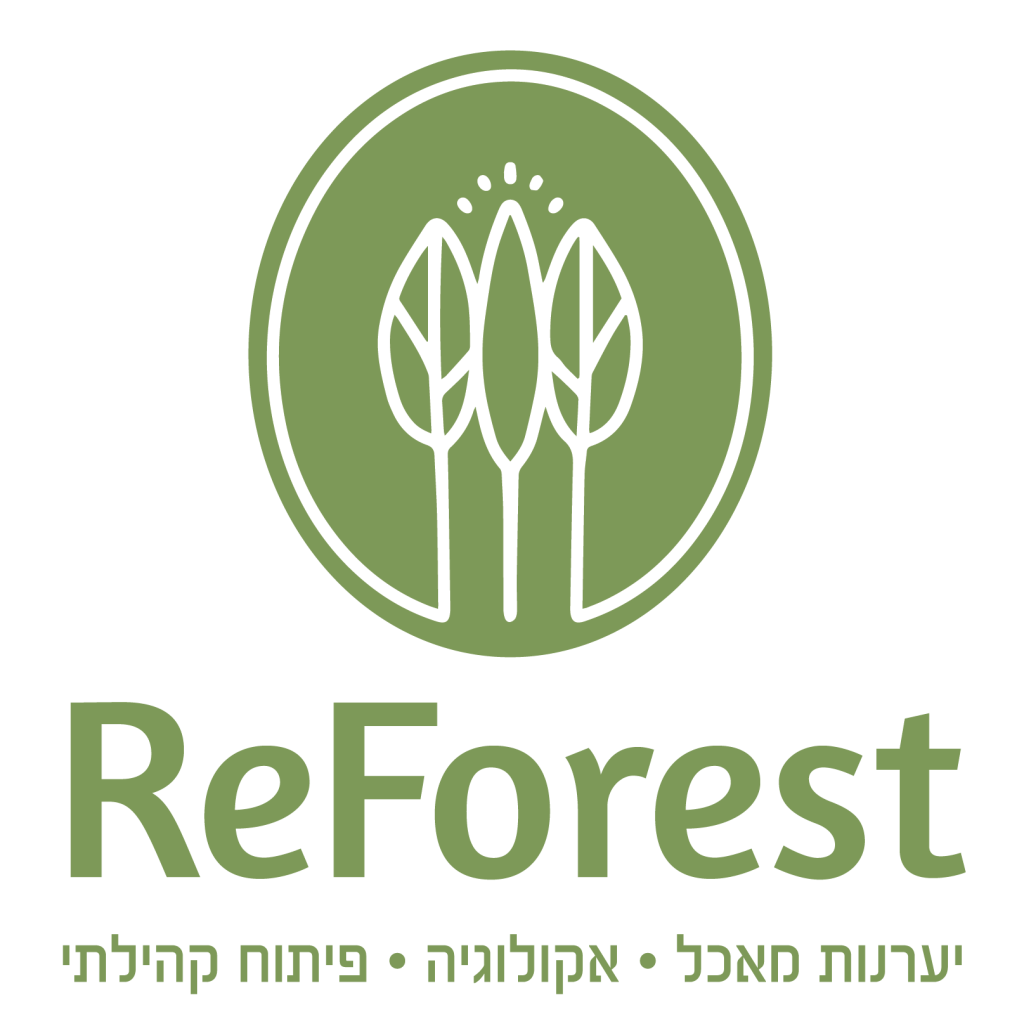First, what is ‘improvement of the soil’?
At its base, improvement of the soil is rehabilitation of the biological diversity in the soil. Soil that has an abundance and variety of microorganisms will be full of life, fertile and stable. Lifeless soil is deficient, structureless and prone to erosion.
What’s the structure of healthy soil?
Healthy soil will be aerated and have stable biological conglomerates. The conglomerates are soil particles which are basically glued together with sugar excretions from the microorganisms living in the soil. This means we will see sticky black soil with a pleasant forest odor, with lots of life in it.
First, we’ll examine the soil
We want to understand the structure of the soil in order to choose suitable vegetation and the required soil improving treatment.
This is called soil profiling. We’ll dig deep (approx. 1.5 meters), take samples and send them to the lab.
The results will help us understand the percentage of sand/clay in the soil – this is the indication for soil heaviness.

The same test will also help us understand which plants will develop well in the area, and draw conclusions regarding the best ways to grow and take care of them in the future.
Then we’ll breathe life into it
The soil we usually encounter is pretty “dead”, after years of conventional agriculture – tight soil, poor in organic matter, usually containing residue nutrients from conventional fertilizer materials left in the area.
In order to breathe life into the soil, we enrich it with organic material – mulch and compost.
This enriches the soil with a diversity of organisms, and creates an aerated soil structure, in which high oxygen levels enable healthy metabolism.
For further information, check out the article: How to structure soil
Natural fertilizers we will use and why
Plant manure – created only from plant leftovers in a controlled process in order to receive balanced and reliable compost.
Animal manure – there is a wide variety – poultry, cattle and sheep, horse. Each manure has different qualities and limitations, and there is a need for certain knowledge in the manure’s maturation process, as well as when and what quantity to use.
Green manure – similarly to the plant manure, its source is in vegetation grown and harvested to serve as fertilizer and covering.
Human manure – long composting (half a year) of human excretions and dry material added to it.
The type of manure chosen as a fertilizer will be decided according to the needs of the vegetation, soil conditions, and resource availability.
For example: in a project connected to a horse ranch or cattle farm, we will conduct a plan to wisely utilize the animal manure resource.

Mulch we will use and why
By covering the soil, mulch enables keeping the ground moist, balancing extreme temperatures, and preventing carbon emission into the atmosphere.
During rain events, the porous structure of the mulch enables increased water absorption and optimal utilization, instead of trickling away and losing them, or flooding the area.

The mulch should be high quality and seedless, this should be taken notice of. There is mulch in differing qualities, there’s free mulch from the authorities all the way to clean one-source forest mulch.
The mulch brings lots of life with it, at the microorganism level. These, in turn, bring the ground animals, but the mulch itself also often contains many seeds of vegetation we don’t want to nurture. The quality of the mulch will affect the presence of unwanted seeds.
Learn more about mycorrhiza here
Runoff conservation is ground conservation
As part of the systemic viewpoint, we will operate to retain runoff water on the ground and utilize it for our needs.
Retaining water in designated elements like swales moderates the powerful influence of short and heavy rainfall events, of the type which is expected to increase in our area.
Instead of powerful and momentary flows that create soil fissures, cracking and loss of the majority of the water, we will retain the water and moderate their destruction of the soil structure.
The more covering the soil has, the more vegetation planted in it, the wider the diversity of root systems it contains – the more stable it is.
So how will we actually know if we did a good job?
As professionals, we use several optional tests to analyze the progression of the soil improvement process.
One of them is microscopic testing of the microbial fauna in the ground, according to Elaine Ingham’s method. Another is via chromatograms which test for nourishment materials in their available format over time.

However, the most tangible indication is the state of the vegetation in the area; the state of the soil throughout the year and especially after heavy rain events can also teach us a great deal.
Healthy soil will be relatively resistant to extreme events. It will enable the plants growing on it to be more resistant to disease and extreme changes in the weather, and enable them to flourish and bear fruit for many years.
We will conclude this article with an excellent video by Dr. Elaine Ingham, world renowned expert on soil improvement, and we warmly invite you to watch it and broaden your knowledge:






